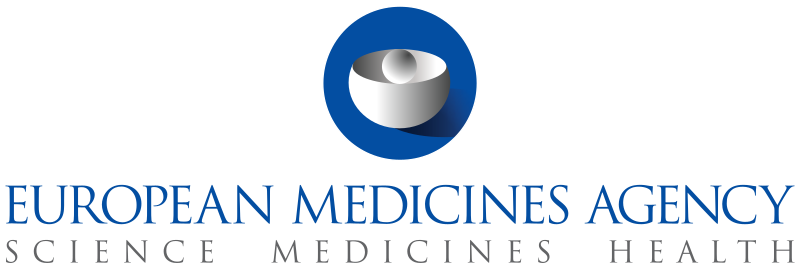- extrapolation of available clinical data, including through appropriate modelling and simulation techniques, to predict how a medicine may work in children and adolescents on the basis of studies conducted in adults or other paediatric populations;
- the possibility to test the safety and efficacy of medicines developed by different companies in one single trial, so-called multi-arm, multi-company clinical trials. As the same control arm is used to compare more than one medicine under evaluation, this approach facilitates the clinical testing of medicines while reducing the total number of children included in trials.
-

This is default featured slide 1 title
Go to Blogger edit html and find these sentences.Now replace these sentences with your own descriptions.This theme is Bloggerized by Lasantha Bandara - Premiumbloggertemplates.com.
-
GMP Trends, Quality Tools
Go to Blogger edit html and find these sentences.Now replace these sentences with your own descriptions.This theme is Bloggerized by Lasantha Bandara - Premiumbloggertemplates.com.
-
GMP News drifts on Market and economy
Go to Blogger edit html and find these sentences.Now replace these sentences with your own descriptions.This theme is Bloggerized by Lasantha Bandara - Premiumbloggertemplates.com.
-

This is default featured slide 4 title
Go to Blogger edit html and find these sentences.Now replace these sentences with your own descriptions.This theme is Bloggerized by Lasantha Bandara - Premiumbloggertemplates.com.
-
What to Ask Your Doctor Before Taking Opioids
Every patient should ask questions when getting a new prescription. This is especially important when your doctor, dentist or other health care professional prescribes you an opioid, such as hydrocodone, oxycodone, codeine and morphine. What should you ask?
Thursday, July 20, 2017
EMA and FDA encourage use of innovative approaches in the development of medicines for Gaucher disease
Implementation plan for the introduction of the safety features on the packaging of centrally authorised medicinal products for human use
Source: EMA Click Here for more infor & Downloads
www.gmpviolations.com GMP News, GMP guidelines, GMP Violations, GMP warnings, GMP Trends. A Public Health Global News Portal. (This story has not been edited by GMP Violations staff and is auto-generated from a syndicated feed/ experts experiences sharing.) Disclaimer: The Logos/Images & content posted here are belongs to respective to Authority / owners of firm. The Article posted under public health importance news. Please ensure the guideline as per Regulatory agencies.
Thursday, May 25, 2017
PHARMA NEWS | EMA Builds Collaboration with African Regulators
The agency met with the representatives of the East African Community to discuss the creation of a networking agency.
www.gmpviolations.com GMP News, GMP guidelines, GMP Violations, GMP warnings, GMP Trends. A Public Health Global News Portal. (This story has not been edited by GMP Violations staff and is auto-generated from a syndicated feed/ experts experiences sharing.) Disclaimer: The Logos/Images & content posted here are belongs to respective to Authority / owners of firm. The Article posted under public health importance news. Please ensure the guideline as per Regulatory agencies.
Thursday, May 4, 2017
How to inform EMA about GMP Problems or Data Integrity Issues
www.gmpviolations.com
MP News, GMP guidelines, GMP Violations, GMP warnings, GMP Trends. A Public Health Global News Portal. (This story has not been edited by GMP Violations staff and is auto-generated from a syndicated feed/ experts experiences sharing.) Disclaimer: The Logos/Images & content posted here are belongs to respective to Authority / owners of firm. The Article posted under public health importance news. Please ensure the guideline as per Regulatory agencies.
Friday, April 7, 2017
EMA revises Guide on Pharmaceutical Water And open for Commnets
www.gmpviolations.com
GMP News, GMP guidelines, GMP Violations, GMP warnings, GMP Trends. A Public Health Global News Portal. (This story has not been edited by GMP Violations staff and is auto-generated from a syndicated feed/ experts experiences sharing.) Disclaimer: The Logos/Images & content posted here are belongs to respective to Authority / owners of firm. The Article posted under public health importance news. Please ensure the guideline as per Regulatory agencies.
Wednesday, February 1, 2017
Saturday, January 28, 2017
European Medicines Agency’s Committee Meeting highlights on Medicinal Products for Human Use (CHMP) 23-26 January 2017
Thursday, January 19, 2017
Handling of Reports of Suspected Quality Defects in Medicinal Products
GDP Compliance : EMA
|
Sunday, December 25, 2016
EMA issues new Guideline on "Chemistry of Active Substances"

Wednesday, December 21, 2016
EMA revises Guideline on Process Validation for Finished Products
EMA revises Guideline on Process Validation for Finished Products
Source:
Wednesday, November 16, 2016
EMA/ FDA Mutual Recognition Agreement moving forward
EMA/ FDA Mutual Recognition Agreement moving forward
www.gmpviolations.com (This story has not been edited by GMP Violations staff and is auto-generated from a syndicated feed.) Disclaimer: The Logos/Images posted here are belongs to respective to Authority / owners of firm.























